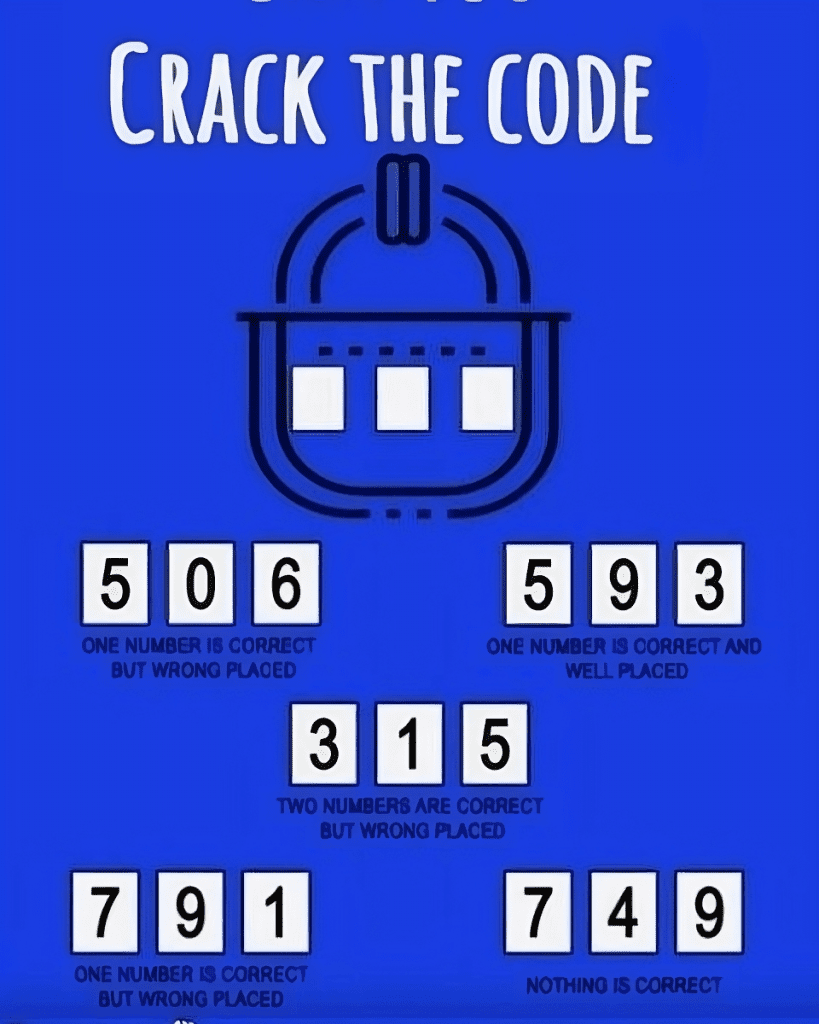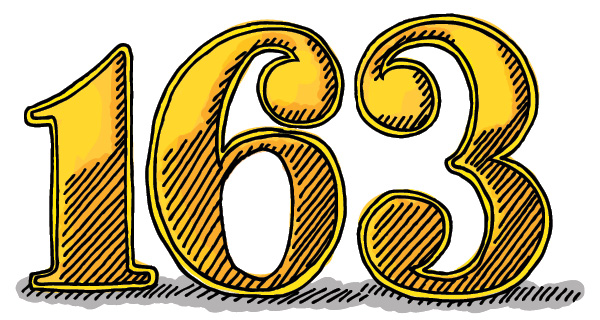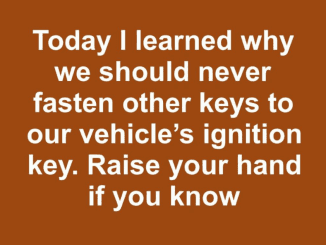Puzzles have a unique way of getting our brains to think outside the box, and today’s code-breaking challenge is no different. If you’re up for it, try to crack the three-digit code based on the clues provided. This puzzle requires logic, deduction, and a bit of patience, making it a fun test of your problem-solving skills.
Why This Puzzle is Tricky

At first glance, this puzzle might seem like a straightforward task, but it’s easy to make errors if you’re not paying close attention to the details. The clues might appear simple, but the solution requires careful consideration of the information provided.
The challenge lies in interpreting each clue accurately. Since the clues involve specific statements about the position and correctness of the digits, solvers often struggle with identifying which digits to include and where to place them.
Common Mistakes Solvers Make
- Assuming Correct Placement Too Soon: One of the biggest errors is to assume that a digit is correctly placed based on partial information. This can lead you down the wrong path, making it difficult to correct later.
- Overlooking Elimination: Some solvers forget to eliminate numbers that are proven incorrect, leading to confusion.
- Not Rechecking Each Clue: It’s crucial to reevaluate all the clues after each step. Sometimes, an assumption made earlier might need to be revised based on later clues.
Now, let’s break down the solution step-by-step to find the correct code.
Step-by-Step Solution to Crack the Code
Let’s analyze each clue and use the process of elimination to narrow down the possible code.
Clue 1: 506 – One Number is Correct but Wrong Placed
- This tells us that one of the digits in 506 is part of the code but is not in the correct position. So, we know that either 5, 0, or 6 is in the code, but none of these digits is in its correct position.
Clue 2: 593 – One Number is Correct and Well Placed
- Here, we know that one of the digits—5, 9, or 3—is both part of the code and in the correct position.
- Because we know from Clue 1 that 5 is not correctly placed in the first position, it cannot be the correct digit in this clue. This means that either 9 or 3 is correctly placed.
- Since 9 was proven incorrect in Clue 5 (749), the digit that is correct and well placed here must be 3 in the third position.
Clue 3: 315 – Two Numbers are Correct but Wrong Placed
- We already know that 3 is correctly placed in the third position, so it cannot be one of the “wrongly placed” digits in this clue.
- This means that the other two digits—1 and 5—are in the code but are misplaced here.
- So, 1 is part of the code but not in the second position, and 5 is part of the code but not in the third position.
Clue 4: 791 – One Number is Correct but Wrong Placed
- We know from Clue 2 that 9 is not part of the code, so the correct digit in this clue must be 1.
- Since 1 is wrongly placed in the second position here, it must be in the first position of the code.
Clue 5: 749 – Nothing is Correct
- This clue confirms that 7, 4, and 9 are not part of the code, which supports our earlier deductions.
Putting It All Together
Based on our analysis so far, we have:
- 1 must be in the first position (from Clue 4).
- 3 must be in the third position (from Clue 2).
- The remaining digit must be 6, as it is the only possible option left for the second position (from Clue 1 and Clue 3).
So, the code is 163.
The Correct Answer: 163

After carefully analyzing each clue and eliminating incorrect digits step-by-step, we find that the code is 163. This solution aligns perfectly with the conditions provided by each clue.
Why This Puzzle is a Great Brain Teaser
This code-breaking puzzle is a fantastic exercise in logical reasoning. It requires you to think carefully about each clue, eliminate possibilities, and piece together the information step-by-step. It’s not just about spotting the right answer but understanding the relationships between each piece of information.
Challenge Your Friends and Test Your Logic
Did you manage to crack the code? If so, well done! If not, don’t be discouraged—this kind of puzzle takes practice. Share it with your friends and see if they can solve it. Discussing different strategies can help improve your logical thinking.
Conclusion
This puzzle shows that even seemingly simple clues can require deep thinking and analysis. It’s a reminder that attention to detail and a step-by-step approach are key to solving complex problems. Keep challenging yourself with similar puzzles, as they are excellent for boosting logical reasoning and critical thinking skills.


